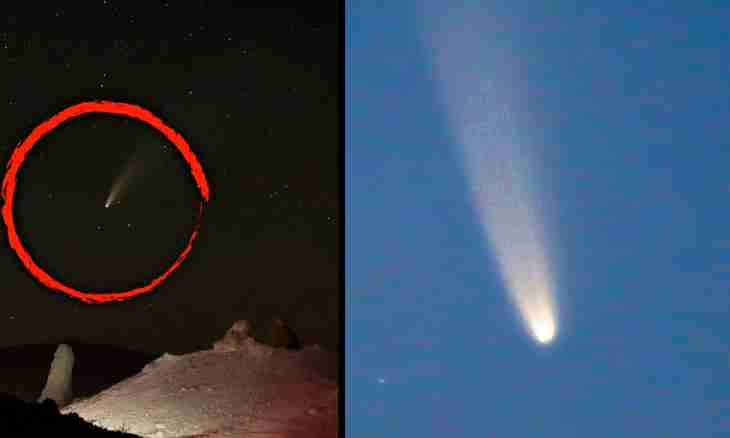Shining, infinitely various, it is unique fine chasms of space concerned, bewitched, inspired mankind throughout not one millennium. However over time people learned to see in celestial bodies not only beauty and a riddle, but began to find regularities which could be adapted for own, quite ordinary needs in their harmony. For this purpose first of all it was necessary to learn to distinguish some heavenly objects from others.
It is required to you
- - telescope or field glasses;
- - prism.
Instruction
1. First of all, it is necessary to understand that comets without tail do not exist. If you do not see a comet tail with the naked eye, it means only one: the parts of dust, the smallest splinters of stones and the warmed gas forming a tail move strictly on the Comet Sun-Earth-head line in the direction from Earth. Thus, for the terrestrial observer the tail of a comet is hidden behind her head. At the same time around the head the illusive luminescence which at irregular observations of heavenly objects is easy for confusing with a fog is clearly distinguishable. How to the uninitiated observer to distinguish these so diverse celestial bodies?
2. If you have at least no primitive optics, – field glasses or the small telescope – not to do you without regular observations of celestial bodies. For this purpose choose the same time of day to within a minute, only adjusted for change of day length.
3. The second condition of such observation is the absence or minimization of influence of electric lighting. For this purpose choose sites of the area, remote from the city, and if it is impossible, try to find the most sublime places for observations: high hills, roofs of high-rise buildings, etc. At the same time do not forget about precautionary measures.
4. At observance of these conditions watch an estimated comet and those celestial bodies which you consider fogs. Fogs will keep the location among stars for an appreciable length of time, yet there will not come the next season. The comet, on the contrary, in several days will become invisible to an unaided look.
5. The second difference is that comets move concerning other celestial bodies, in particular – stars whereas fogs keep the location among constellations invariable. Watch the object interesting you within several nights in a row. At the first observation sketch as much as possible precisely (or photograph – it will give to your research the greatest objectivity) the provision of the object of stars and constellations rather known to you interesting you. Repeat this procedure within a week, and you without effort will notice how the location of a comet in comparison with initial changed.
6. So, having used the field-glass, you will be able to see that fogs have very different structure and a form, and at bigger increase you will notice that inside or directly near a fog there is always a star (stars) which highlights the ionized fog gas. Near comets there are no stars, except the Sun, but in a case with "tailless" representatives of this type of the population of our star system it is impossible to observe at the same time both of these objects.
7. Visual observation also shows that comets always have regular shape and uniform structure. And as their origin is similar, they have also the similar chemical composition which causes their luminescence. The largest force of a luminescence in the head of a comet is the share of carbon and cyanogen, and is closer to a kernel – on molecules of hydrocarbon and compounds of hydrogen with nitrogen. Therefore at frontal position of rather terrestrial observer the majority of comets looks as a diffusion spherical body of the yellowish color in the center passing into brightly blue, and then green-bluish shades.
8. The chemical composition of fogs, features of their origin, life cycle of a nearby star and many other things allow them to get exotic, bizzare shapes, various coloring and that is important, fibrous structure under the influence of magnetic fields of the next stars. It is almost impossible to meet two identical fogs. You can make sure of all this personally, having armed with rather simple telescope.
9. If you are well familiar with the spectral analysis, in the observations can safely use an ordinary prism. This simple adaptation will allow you to see a difference in the chemical composition of comets and fogs. And further everything depends on you: how fascinating and fascinating this occupation will seem to you, so well you will be able to accustom to determination of structure of celestial bodies on lines of a range, having resumed at least the school knowledge.

